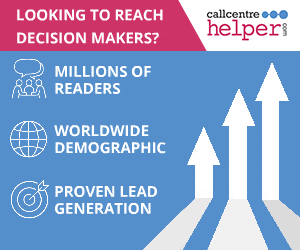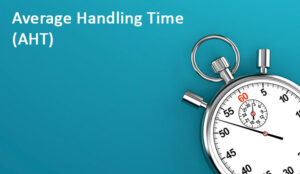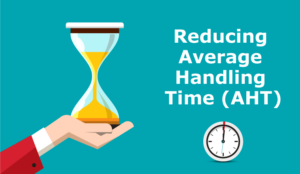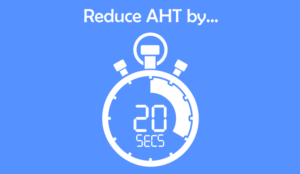When a new contact centre advisor finishes their induction training, their Average Handling Time (AHT) is usually much higher than that of a fully proficient advisor.
Over time, this handling time gradually decreases as the advisor becomes more confident and experienced. This improvement curve is known as the AHT glidepath.
To get you started, Call Centre Helper’s Jonty Pearce explains what the AHT glidepath is, why it matters, and how to model it using a simple spreadsheet.
Video: The AHT Glidepath – Track Agent Onboarding
Watch the video below to hear Jonty explain the AHT Glidepath:
What Is an AHT Glidepath?
The AHT glidepath represents the period it takes for an advisor to reach full proficiency. It reflects how quickly their AHT declines from a post-training high to a steady, experienced-level average, as Jonty explains:
“The AHT glidepath is the time it takes to reach proficiency in a contact centre. When you come out of induction training, you’ll typically have a much longer average handling time than when you become fully proficient.
That period could be anywhere from six weeks to three months, possibly even a year in a complex technical area.
The glidepath is the formula that shows that proficiency happening over time and that glidepath is what’s called an exponential decay.”
This transition often follows a pattern known as exponential decay, where improvements are fast at first, then slow down as they approach a stable level.
- Depending on the complexity of the role, the glidepath period can vary:
- Around 6 weeks in a typical contact centre environment
- 3 months for moderately complex roles
- Up to a year in highly technical or specialist areas
An Example of an AHT Glidepath
“Here’s an example of an AHT glidepath, in this case, after induction training the advisor has an average handling time of 900 seconds.
After 3 months they’ve become a lot more proficient, they are trailing down to the normal for that group of 600 seconds of average handling time. And what you’ll see here is the exponential decay happening.
You’ll typically find a period, in this case it’s three weeks, after three weeks they’ve reached 50% proficiency, and effectively they are halfway at this level between the 900 seconds and the 600 seconds.
This type of graph is called exponential decay, or logarithmic decay. So to make it easier to work out the AHT glidepath, I’ve made this simple little spreadsheet that enables you to calculate what the AHT glidepath will be.”
Let’s take an example:
- An advisor finishes training with an AHT of 900 seconds
- The target AHT for a proficient advisor is 600 seconds
- After 3 weeks, they’re at the halfway point — 50% proficiency
This gradual improvement follows a curve, not a straight line, meaning you’ll see faster gains early on, with improvements levelling off over time. This curve is a typical example of exponential (or logarithmic) decay.
Modelling the Glidepath
To make planning easier, we’ve created a free downloadable spreadsheet that models the AHT glidepath.
“There’s three values you need to put in here: you need to put in the AHT when someone leaves the induction period, say 1,000 seconds.
You need to put in the AHT when they’re fully proficient, say 500 seconds, and you need to say what is the time to 50% proficiency.
So I could perhaps put in six weeks and then effectively what this does is it plots out the graph for you, and you can see the number of weeks after induction training, you can see how the actual values have come through, so you can actually put a value onto the cost of training up a new agent.”
It lets you calculate and visualise the improvement in AHT over time, based on just three inputs:
- Initial AHT (post-training)
- Target AHT (when fully proficient)
- Time to 50% proficiency
Once entered, the spreadsheet automatically plots a graph showing how AHT is expected to decrease over time. This can be a valuable tool for understanding the real cost of onboarding new advisors and for making smarter workforce planning decisions.
Free Download – AHT Glidepath Example Spreadsheet
Do you want to download the AHT Glidepath Spreadsheet to use?
Get your free download of the AHT Glidepath Example Spreadsheet now:
If you are looking for more great insights from Jonty, check out these next:
- Why Your Forecasters Should Always Talk to Marketing
- Is Overhang Distorting Your Staffing Calculations?
- Getting Started With Forecasting
- How Accurate is Your Forecasting?
Author: Jonty Pearce
Reviewed by: Robyn Coppell
Published On: 25th Jun 2024 - Last modified: 12th Aug 2025
Read more about - Video, AHT Glidepath, Average Handling Time (AHT), Free Downloads, Top Story, Videos

















